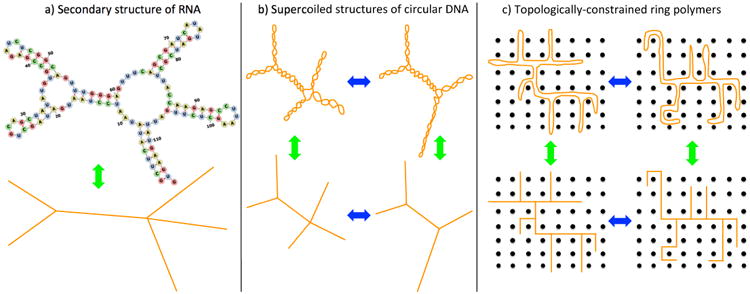Fig. 1.

(a) Due to the Watson-Crick base pair mechanism and neglecting the difference of excluded volumes between loops and stems, single filaments of RNA have a branched secondary structure (here, visualized by the FORNA31 software). These structures have been shown6–8 to play a crucial functional role in the RNA behavior inside viral capsids. (b) The increase of the level of supercoiling in circular polymers (rings) gives rise to the formation of plectonemes: by neglecting plectonemes torsional properties, rings assume the shape of branched structures9 which reproduce the experimental behaviour of circular DNA inside the bacterial nucleoid10. According to the total amount and distribution of supercoiling the ring may continuously switch between different branched structures. (c) By neglecting the excluded volume interactions between double-folded strands, a single ring polymer constrained in a matrix of fixed obstacles21–23 resembles a branched polymer with annealed connectivity: in this situation, an “elk” may change into a “camel” and viceversa.
